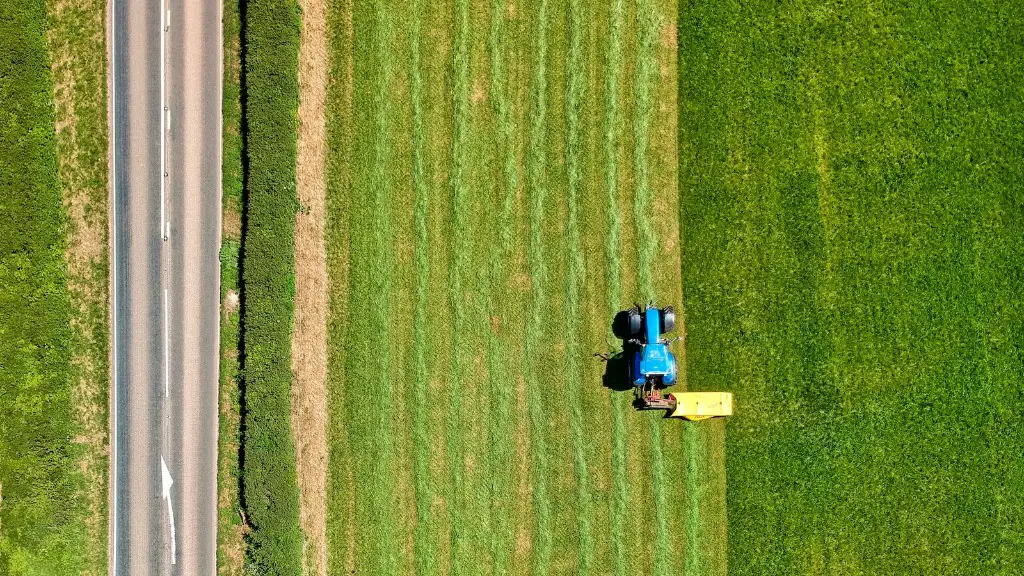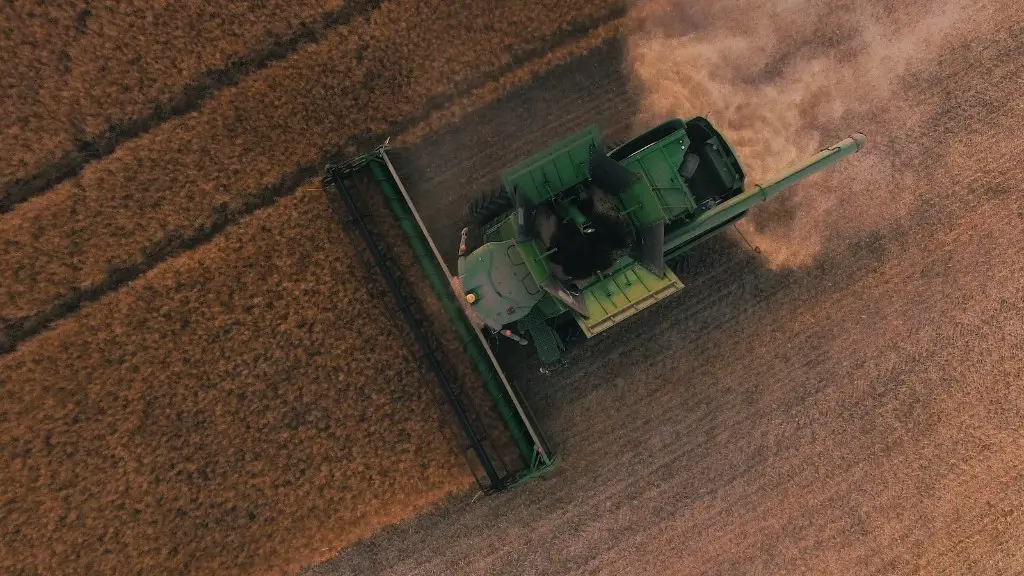Plantation agriculture was wasteful for several reasons. It exhausted the soil, encouraged deforestation, threatened food security, and caused numerous other environmental issues. To understand why plantation agriculture was so damaging, it’s important to consider its history, environmental impacts, and most frequent flaws.
Plantation agriculture was a form of farming that emerged in the 1500s, developed by Europeans as they colonised larger areas of land in the Americas. It quickly became predominant in the Caribbean and Latin America, where agricultural production was high. Plantation agriculture remained popular until the early 20th century, when its environmental impacts became more evident.
The main environmental issue that plantation agriculture caused was soil degradation. Plantations tended to focus on one or two main crops, such as cotton or sugar cane. This monoculture degrades the soil over time, depleted of nutrients and minerals. This leaves the land prone to erosion, floods, and other natural disasters, compounding the damage done to the environment.
Furthermore, plantations often encouraged deforestation, as vast swathes of land had to be cleared to make way for the crops. This resulted in the loss of biodiversity, and in some cases caused significant impacts on the local climates. For example, the clearing of woodland around Amazonian plantations has been linked to increased temperatures and decreased rainfall in the region.
Plantation agriculture was also less efficient and cost-effective than other forms of agriculture, such as small-scale, diversified farms. Plantations were designed to produce large quantities of a single crop, which could then be sold and exported. However, this often led to overproduction and wasted resources, as production was often focused on profits rather than sustainability.
Finally, plantation agriculture also threatened traditional farming techniques and customs. It was often used to displace small farmers who had inhabited the land for centuries, and as such destroyed not only their livelihoods, but also the way of life that had been in place for generations. This had a long-term psychological impact on these rural communities, and disrupted ancestral systems of farming and land use.
Consumption of Natural Resources
Plantation agriculture heavily relied on the consumption of natural resources, driving the exploitation of both land and indigenous people’s labor. This heavy reliance on natural resources caused an irreversible depletion of the land, resulting in accelerated soil erosion, biodiversity loss, and pollution. As plantation activities caused a dramatic shift in the environment, many of the local flora and fauna were pushed further to the brink of extinction. In addition, a great part of the land was cleared of trees, resulting in massive deforestation and ecosystem loss.
The rapidly declining natural resources due to plantation agriculture also led to a decrease in the availability of clean drinking water, and thus created a lack of clean water for both humans and animals. Agriculture-related water pollution also threatened food security, as it caused algal blooms and eutrophication in local water sources, resulting in contaminated drinking water and a decrease in available freshwater. As the water sources became more and more contaminated, humans and animals were left with fewer safe sources of water, which caused a decrease in the abundance of local species.
As the natural resources were consumed, the soil was drained of essential nutrients, leaving it insufficiently able to sustain plants and crops. The soil degradation caused by plantation agriculture was further intensified by the introduction of chemical fertilizers and pesticides, both of which further depleted the soil of its essential nutrients and minerals. The chemicals and agents used in the production of plantation crops were harmful to the environment, and negatively impacted the organisms that lived around the plantations.
In addition, plantation agriculture was a highly energy-intensive form of agriculture. Plantations relied on irrigation systems and machines to cultivate the large quantity of crops, both of which demanded large amounts of energy and resources. The intensive energy use often caused an increase in the consumption of fossil fuels, resulting in an increase in greenhouse gas emissions and in climate change.
Finally, plantation agriculture was often accompanied by the industrialization of rural areas. This sparked the relocation of many farmers, as they were encouraged to move to the cities and towns to help increase the production of crops. This led to the disruption of traditional communities and a loss of social ties between the farmers and their land.
Social Impact
Plantation agriculture also caused a significant social impact. It often led to the displacement of farmers from their land and communities, as a result of landowners wanting to maximize their profits and industrialize the region. This often resulted in the loss of traditional customs, as the local people had no choice but to move away from the regions they had traditionally inhabited.
As plantation agriculture was dependent on cheap labor, landowners often hired people from oppressive cultures and paying them very little for their work. This led to economic exploitation and placed a great deal of strain on the local workers, who were often working in extreme conditions and exposed to dangerous chemicals. The workers were exposed to hazardous working conditions and harassment, leaving them often feeling powerless and vulnerable.
Plantation agriculture also hindered social mobility by preventing the growth of small businesses in the communities. As plantations were owned and controlled by a few large landowners, competition became impossible and the local businesses were left with little chance of success. This led to poverty and inequality, with a large part of the population unable to afford basic amenities.
The environmental and social impacts of plantation agriculture have been felt globally, as the areas in which it was practiced often experienced loss of livelihood, deforestation, soil degradation, air pollution, and other consequences. As a result, many countries have abolished plantation agriculture and have implemented policies that encourage sustainable practices.
Sexual Exploitation
Another frequent consequence of plantation agriculture was the sexual exploitation of the local women and girls. With the influx of workers from outside the village and laborers from other countries, women and girls are more vulnerable to the exploitation that the plantations bring. Oftentimes, there are no laws or policies in place to protect workers and women, leaving them vulnerable to exploitation. This exploitation often manifests in the form of human trafficking and forced labor.
The prevalence of sexual harassment on plantations is also high, with women and girls being subjected to both physical and verbal abuse. In some cases, even if there are laws in place, women are too scared to come forward and report such incidents, as they fear the consequences or the retribution of their employers. This leaves the perpetrators unpunished, perpetuating a cycle of abuse and exploitation.
The sexual exploitation of women and girls in plantation agriculture is a direct consequence of the power imbalance between workers and employers. Often, the women and girls are powerless to speak out against their employers, as they fear for their safety, their livelihoods, and their honor. This power imbalance contributes to the prevalence of sexual harassment, exploitation, and human trafficking.
Unfortunately, the consequences of sexual exploitation of women and girls in plantation agriculture are often far-reaching. Young girls are often taken from their families, trafficked from their home countries, and subjected to labour and sexual exploitation in the plantation agriculture. This has long-term psychological and physical impacts on the victims, and can damage the wider community as well.
Health and Safety Risks
Finally, plantation agriculture caused numerous health and safety risks both for the workers and the environment. The type and level of hazardous chemicals used in plantation agriculture can be quite extreme, as many of these chemicals are known to be toxic to both the environment and to humans. This poses a great risk to both the workers and the local environment, as the chemicals can easily contaminate the soil, water, and air if not managed properly.
In addition, the harsh working conditions in plantations could lead to numerous health issues for the workers, such as exhaustion, dehydration, and malnutrition. Furthermore, the workers are also often exposed to mosquitoes, insects, and other pests, which can cause various illnesses and diseases.
Finally, the working conditions in plantations often fail to meet the standards outlined by national and international labor laws. This means that workers are often unable to access the safety equipment and protective clothing that would be required in any other workplace. This poses a significant risk to health and safety, as workers are at risk of injuries, illnesses, or even death.
Conclusion
Plantation agriculture was wasteful and damaging, both to the environment and to the local people. It caused soil degradation, deforestation, pollution, exploitation of labor, and numerous other environmental and social issues. These issues have had far-reaching consequences, impacting ecosystems, disrupting communities, and threatening food security. Thus it is important to be aware of the consequences of plantation agriculture and to strive for more sustainable forms of agriculture.





